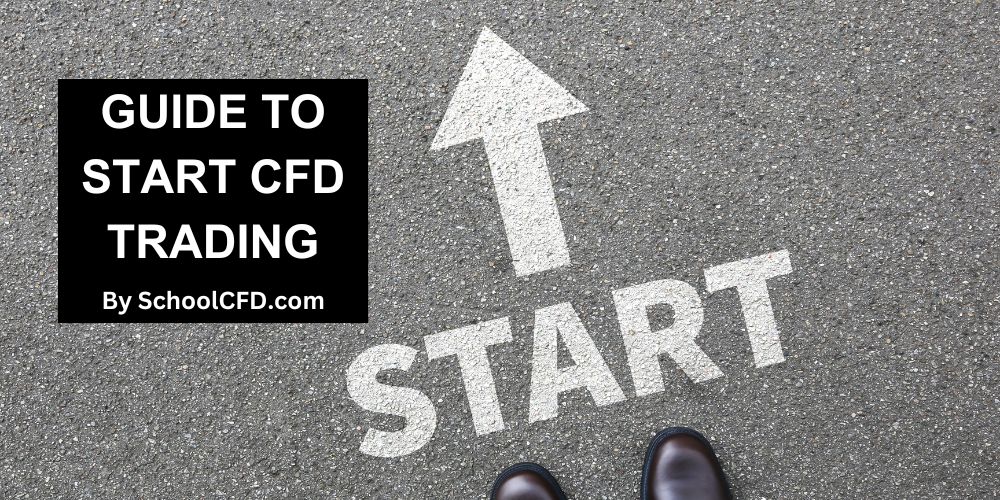
Welcome to the School CFD Blog! Today, we’ll dive into the essentials of Contract for Difference (CFD) trading, perfect for beginners who want to embark on their trading journey with confidence.
What is CFD Trading?
CFD trading allows you to speculate on the price movements of various financial markets such as stocks, commodities, indices, and forex. Unlike traditional trading, you don’t own the underlying asset. Instead, you trade on the price difference between the entry and exit points of a contract.
Why Choose CFD Trading?
CFD trading offers several advantages:
- Leverage: You can control a larger position with a smaller amount of capital.
- Flexibility: Trade on a wide range of markets from a single platform.
- Short Selling: Profit from falling markets by selling CFDs.
- No Stamp Duty: In many regions, CFD trading is exempt from stamp duty, reducing your overall trading costs.
Is CFD Trading Suitable for Beginners?
CFD trading can be suitable for beginners due to its flexibility and accessibility. With low initial capital requirements and the ability to trade on various markets from a single platform, it offers a versatile entry point. However, beginners must be cautious of the high risks involved, particularly due to leverage, which can amplify both gains and losses. It is crucial for new traders to educate themselves thoroughly, practice with demo accounts, and employ disciplined risk management strategies to navigate the complexities of CFD trading successfully.
Is CFD Trading Hard?
CFD trading can be challenging due to its complexity and risks, especially with leveraged trades amplifying both gains and losses. It requires continuous learning, disciplined strategy, and staying updated on market trends. While the learning curve is steep, using educational resources, practicing with demo accounts, and mastering the basics can make it more manageable.
How Much Capital To Start Trading CFD?
The amount of capital needed to start trading CFDs can vary depending on the broker and the leverage offered. Typically, traders can start with a relatively small amount, often as low as $100, due to the leverage that allows control over larger positions with less capital. However, it is advisable to begin with a more substantial amount, such as $1,000 or more, to manage risk better and provide a buffer against potential losses. Adequate capital ensures you can withstand market volatility and avoid margin calls.
Where Can I Start CFD Trading?
To start CFD trading, you’ll need to find a reliable broker that offers a user-friendly platform, competitive spreads, and robust customer support. Many brokers provide demo accounts, allowing you to practice trading without risking real money. Some good forex brokers include:
- IG: Known for its extensive range of markets and educational resources.
- eToro: Offers social trading features and a wide variety of assets.
- CMC Markets: Provides advanced trading tools and competitive pricing.
- Plus500: Features a simple platform with tight spreads.
- Saxo Bank: Ideal for professional traders with its advanced platform and extensive market access.
Using a demo account with these brokers can help you gain experience and build confidence before trading with real capital.
What Kind Of CFD Instruments Are There?
CFD trading offers a wide range of instruments, allowing traders to diversify their portfolios. These include:
- Stocks: Trade shares of individual companies without owning the actual stock.
- Indices: Speculate on the performance of major stock indices like the S&P 500 or FTSE 100.
- Forex: Trade currency pairs such as EUR/USD or GBP/JPY.
- Commodities: Trade commodities like gold, oil, and silver.
- Cryptocurrencies: Trade digital currencies such as Bitcoin and Ethereum.
- ETFs: Trade Exchange-Traded Funds that track various sectors or assets.
This diversity enables traders to access multiple markets and manage their investment strategies effectively.
Key Concepts for Beginners
- Leverage and Margin: Leverage amplifies your potential returns but also increases risk. Margin is the amount of capital required to open and maintain a leveraged position.
- Spreads and Commissions: Understand the costs associated with CFD trading, including the spread (difference between buy and sell prices) and any commissions.
- Risk Management: Use stop-loss orders to protect your investments and manage your risk effectively.
How to Get Started
- Educate Yourself: Utilize the educational resources and courses available at School CFD to build a strong foundation. Our comprehensive courses cover everything from basic concepts to advanced trading strategies, ensuring you have all the knowledge you need.
- Choose a Reliable Broker: Select a reputable CFD broker that offers a user-friendly platform, competitive spreads, and robust customer support. Ensure they provide the necessary tools and resources to assist you in your trading journey.
- Practice with a Demo Account: Before trading with real money, use a demo account to familiarize yourself with the platform and refine your strategies. This risk-free environment allows you to gain experience and build confidence without financial pressure.
Common Mistakes to Avoid
- Over-Leveraging: While leverage can magnify your profits, it can also increase your losses. Use leverage cautiously and understand its implications fully.
- Ignoring Risk Management: Always set stop-loss orders to limit potential losses and protect your investment.
- Lack of Research: Stay informed about market trends and news that could impact your trades. Conduct thorough research before making any trading decisions.
Advanced Strategies
Once you’ve mastered the basics, you can explore advanced CFD trading strategies such as:
- Hedging: Protect your portfolio from potential losses by taking opposite positions in related markets.
- Scalping: Make numerous small trades to profit from minor price fluctuations.
- Swing Trading: Hold positions for several days to capture market swings.
Conclusion for Beginners to CFD Trading
CFD trading can be a rewarding venture if approached with the right knowledge and strategy. By leveraging the resources and expert guidance provided by School CFD, you can enhance your trading skills and make informed decisions. Remember, the key to successful trading lies in continuous learning and disciplined risk management. Stay tuned to our blog for more tips, strategies, and updates on CFD trading.
Happy Trading!
